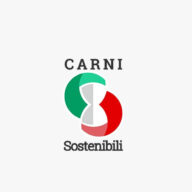
Working together to accelerate the EU’s green transition
Accelerating the EU’s green transition is a priority in the fight against climate change. Collaboration is the key to reducing on-farm emissions.
Reducing greenhouse gas emissions from agriculture and livestock is key to achieving the EU’s climate change targets. Farmers face significant challenges in reducing these emissions on their own. The EU has successfully reduced its emission intensity in agriculture since 1990, as emissions grew slower than output, reflecting a decoupling of emissions from production. According to the OECD report, the Organisation for Economic Cooperation and Development (OCSE), these reductions happened in the 1990s and 2000s due to a better use of fertilisers.
Focusing on livestock, methane emissions from enteric fermentation and nitrous oxide emissions from soils are responsible for 48% and 31% of total agricultural GHG emissions, respectively, according to the European Environmental Agency (EEA). Methane from manure management accounts for about 17% of emissions, and the remaining sources make relatively small contributions, accounting for less than 5% of agricultural GHG emissions in total. Between 2005 and 2021, the EU’s agricultural GHG emissions slightly decreased by 3%, with a further estimated reduction of 2% in 2022. Member State projections indicate that if additional measures are implemented, they will decrease by another 8% towards 2030.
It is important to note that livestock emissions decreased 21% from 1990 to 2021, while crop emissions increased 10% in absolute terms. However, the EU’s goal of climate neutrality by 2050 depends on significant reductions in emissions from the agri-food system, and to meet these challenges, the EU has put agriculture at the heart of the Green Deal, adopting the Corporate Sustainability Reporting Directive (CSRD). This requires agri-food companies to assess and disclose their GHG emissions reduction targets before the directive enters into force in 2025. According to a recent Rabobank report, cooperatives can play a key role in decarbonisation, as the EU transition to a sustainable food system requires cooperation. A ‘whole farm’ approach that brings together the entire supply chain to share costs, risks and rewards to reduce emissions effectively is the key to reducing on-farm emissions.
Collaboration is the key to reducing on-farm emissions
Farmers are at the heart of efforts to reduce emissions in the agri-food supply chain, and they need help to decarbonise production, especially given the small size of the average farm in the EU, which is 17 hectares, which poses significant challenges. The commodification of agricultural products and low-profit margins often prevent farmers from investing in decarbonisation. For this reason, a joint effort involving policymakers, farmers, cooperatives, industry players and financial institutions is essential for an efficient transition to a sustainable, low-carbon crop sector. EU cooperatives can be crucial in this transition. Indeed, efforts to reduce on-farm GHG emissions often focus on single crops, which aligns with food companies’ product-specific targets. Given that European farmers typically grow multiple crops, a strategy to reduce GHG emissions across all crops in rotation could be more effective. This approach requires collaboration across multiple value chains.
The key role of cooperatives
“The European food system is ready for collaboration, particularly in achieving climate and sustainability goals. The uneven distribution of margins and emissions requires a united effort among value chain players,” says Elizabeth Lunik, senior specialist in food and agribusiness, climate and sustainability at Rabobank. “While most collaborations concentrate on individual crops, there is a growing need for cooperatives to ensure that farmers also reap the benefits, whether through cost compensation or commodity price premiums.”
These cross-value chain strategic partnerships address GHG emissions from all crops across the farm, delivering greater benefits to farmers by creating a sustainable supply chain and meeting Scope 3 reduction targets. Harnessing the benefits of regenerative agriculture through a holistic approach can deliver sustainable benefits and returns. However, reaching a consensus among stakeholders on the distribution of costs, risks, and rewards is essential. Unfortunately, only a few cooperatives are currently involved in such collaborations.
According to Lunik, European agricultural cooperatives’ strategic position in the value chain is a key facilitator in ensuring successful transitions within the food value chain: “Successful transition programs require support across the supply chain, including indirect beneficiaries such as local governments. The transition cost and associated risks and benefits must be equitably shared to develop a market for sustainable food products”.





